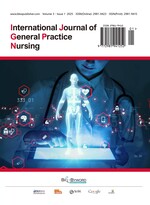Construction and Application of Ideological and Political Case Base in Pediatric Nursing Clinical Teaching
Abstract
Objective: To establish the ideological and political case database of pediatric clinical nursing teaching, integrate the ideological and political concept of the curriculum into the clinical practice teaching, and provide teaching materials for cultivating pediatric nursing talents with comprehensive quality. Methods: Collect pediatric clinical nursing cases with ideological and political elements through consulting Wanfang and CNKI databases and the Internet. Through the expert demonstration, the formation of the course ideological and political case database. Through the combination of online and offline teaching methods, ideological and political elements are incorporated into clinical nursing teaching. Results: Six chapters of pediatric nursing ideological and political cases were preliminarily constructed, and the pediatric nursing clinical teaching case database containing six ideological and political elements achieved good results in the clinical practice training of nursing interns in 2025. Conclusion: The construction and application of an ideological and political case bank in pediatric nursing clinical teaching is conducive to improving the willingness of nursing students care, humanistic care ability and learning effect; it helps nursing students to establish correct values and improve students professional quality and recognition, with high clinical promotion and application value.
References
The Ministry of Education, 2020, Guidelines for Ideological and Political Construction of Colleges and Universities. http://www.moe.gov.cn/srcsite/A08/s7056/202006/t20200603_462437.html
Li T, Min G, Xu RY, 2022, The Influence of Narrative Education Combined with Practical Teaching on the Humanistic Care Consciousness and Humanistic Care Ability of Higher Vocational Nursing Students. Nursing Research, 36(7): 1244–1247. https://doi.org/10.12102/j.issn.1009-6493.2022.07.024
Qi P, Zhao LP, Zhong M, et al., 2022, Research on the Application of FCM Combined with PBL Pedagogy in the Clinical Practice of Pediatric Nursing. Sichuan Journal of Physiological Science, 44(6): 1122–1124 + 1128.

